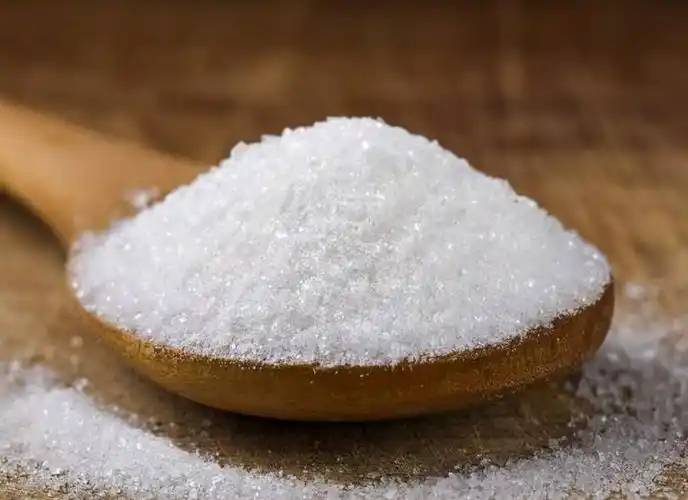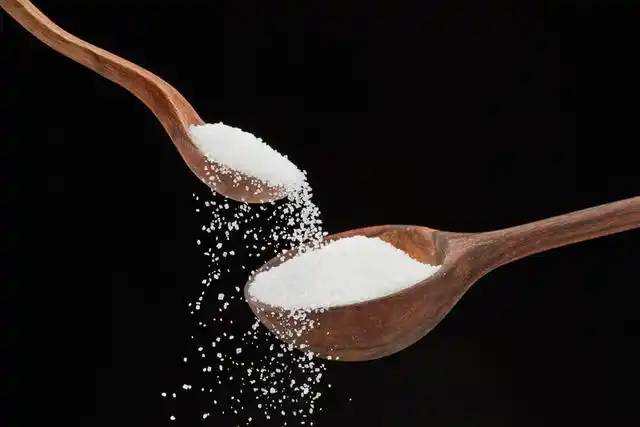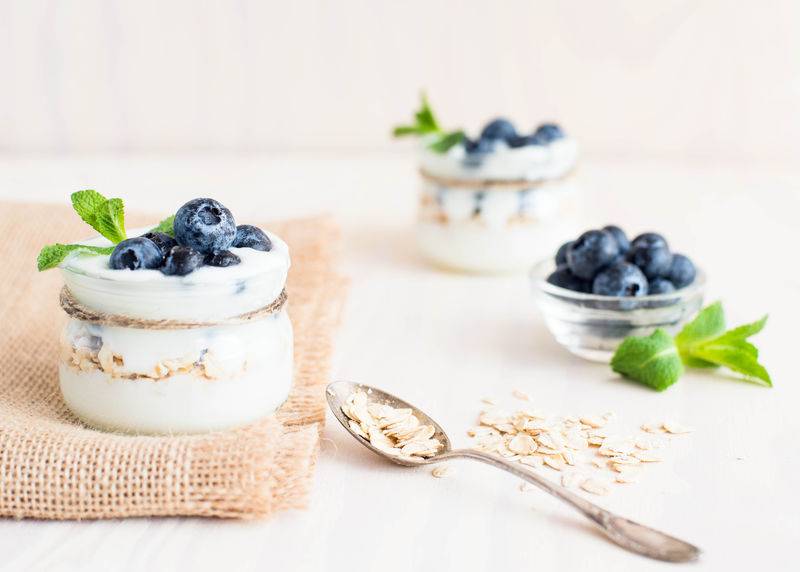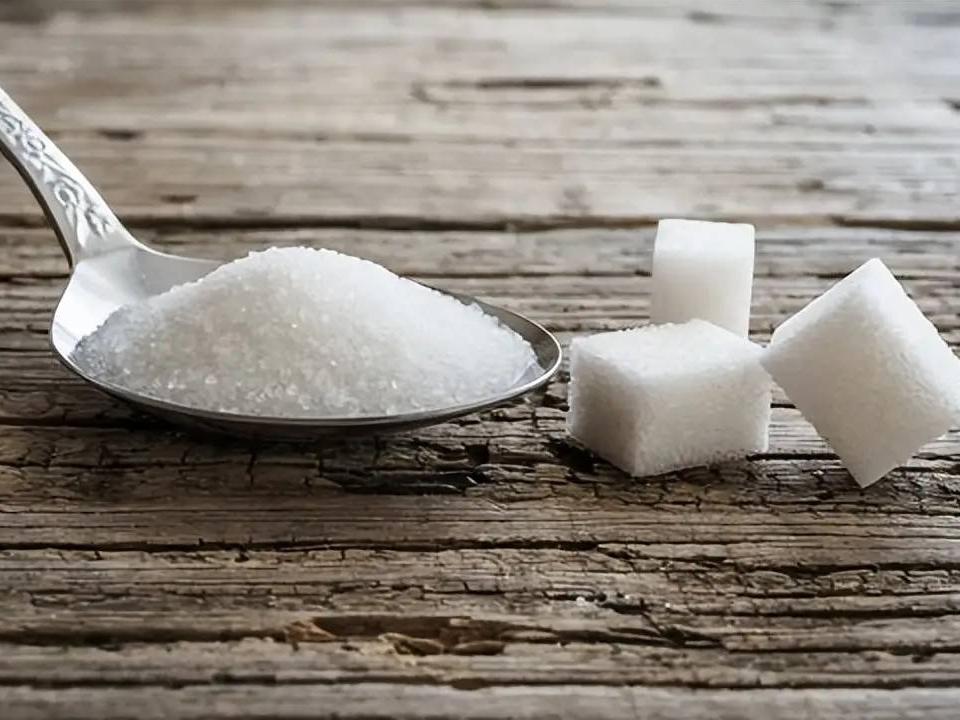What Is Xylitol Used For?
Xylitol (C₅H₁₀O₅), also known as pentane-5-ol, is a white crystal or crystalline powder with a sweet taste. It is highly soluble in water, slightly soluble in ethanol and methanol, with a melting point of 92-96°C, boiling point of 216°C, and heat value of 16.72 kJ/g. It absorbs heat when dissolved in water, so the solid form produces a pleasant cooling sensation in the mouth. Xylitol is similar to sucrose in sweetness and hygroscopicity. It is absorbed by the body without side effects after being ingested, and is widely used. The demand in domestic and foreign markets is increasing day by day. For example, if the product reaches pharmaceutical grade and is made into an injection, the added value will be very high. Xylitol is a chemical product with high practical value that is produced using high-tech methods that comprehensively utilize agricultural waste products. China is a major agricultural country with an abundance of raw materials for xylitol production. The annual output of corn alone is 70 million tons, and about 10 million tons of corncobs can be obtained. If all of these corncobs were used to produce xylitol, 1 million tons could be produced. The product cost is relatively low, it is highly competitive, and it has high development value.

Xylitol is an important chemical raw material widely used in the chemical, pharmaceutical, food and other industries. It can be used to produce surfactants, emulsifiers, demulsifiers, alkyd resins and coatings, and can replace glycerin in the paper industry and national defense industry. It is also a raw material for the pharmaceutical industry to manufacture various drugs. Since the metabolism of xylitol in the body is not related to insulin, it is suitable for the production of foods for diabetics. In recent years, the market demand for xylitol has been growing rapidly, with an estimated annual total demand of more than 100,000 tons. However, China's current annual output of xylitol is less than 2,000 tons, and the selling price per ton is as high as 25,000 yuan. Therefore, the use of agricultural waste materials such as corn cobs and cottonseed shells to produce xylitol has an extremely optimistic outlook.
1 Preparation of xylitol
There are three methods of producing xylitol.
1.1 Extraction
Xylose is mostly extracted from the stems or peels of plants, and then xylitol is produced from xylose.
1.2 Chemical synthesis
The basic principle is that pentoses are hydrolyzed by acid to obtain D-xylose, and D-xylose is hydrogenated under nickel catalysis to obtain xylitol. This method has a long process flow, high equipment requirements, and unsafe production. The newer research is to obtain xylose hydrolysate by hydrolyzing bagasse or corncobs, and electrolyze the electrolyte to reduce xylitol products [1]. The xylose conversion rate can reach more than 95.0%.
1.3 Biosynthesis
The basic principle of the biological method is that the main product of the hydrolysis of agricultural waste such as straw, bagasse, and corncobs is a xylose-containing hydrolysate, and then xylitol is obtained by fermenting the xylose in the hydrolysate using microorganisms.
At present, the fermentation of xylose to produce xylitol from glucose is a research hotspot, because glucose is widely available and relatively inexpensive. However, no microorganism has been found in nature that can directly ferment glucose to produce xylitol. One solution to this problem is the mixed fermentation method. Integrating the pathway that catalyzes the production of xylitol from glucose into a single strain of bacteria, and using this engineered bacteria can directly ferment glucose to produce xylitol. This can not only reduce the number of reaction steps and simplify the process, but also use inexpensive and readily available glucose as a substrate.
At present, industrial production in China mainly uses chemical synthesis. The biosynthesis method uses the reductase enzyme in microorganisms to produce xylitol, which can effectively reduce the production cost of xylitol. The fermentation method not only has the potential to eliminate the xylose purification step, but also simplifies the xylitol separation step, making it a promising production method. Enzymatic synthesis of xylitol achieves continuous and efficient production through the metabolic balance of the xylose reductase coenzyme factor.
2 Properties of xylitol
2.1 An intermediate in carbohydrate metabolism
Xylitol is a normal intermediate in carbohydrate metabolism in the human body. Its metabolism is different from that of ordinary sugars. Xylitol can be absorbed and utilized through cell membranes without the help of insulin after entering the body, and does not increase blood glucose or urinary glucose. Within 12 hours after consuming xylitol, 50% to 60% of it is oxidized to carbon dioxide and water, releasing heat that is used by the body. Between 2% and 10% is excreted in the urine and faeces, and 20% to 30% is stored in the body as glycogen or other intermediate products, without increasing blood glucose levels. Xylitol also stimulates the pancreas to secrete a small amount of insulin. Studies have shown that xylitol can be used alone to replace some glucose-lowering drugs. Clinical trials abroad have shown that diabetics can supplement their bodies with sugar by taking 30g of xylitol mixed in warm water or added to foods such as milk or soya milk every day. Xylitol-processed sweets, chocolate, dried fruit and other foods can not only relieve the mental anguish of diabetics who cannot eat sugar or sweets, but also alleviate the symptoms of the disease, enhance physical strength, regulate diet, and at the same time reduce thirst, hunger, and frequent urination.
2.2 Anti-caries properties
According to the national oral health epidemiological survey, half of the people in China suffer from tooth decay. Tooth decay occurs because people often eat sucrose or foods high in sugar. The sucrose that remains in the mouth produces acidic substances under the action of bacteria, which causes the loss of minerals, corrodes and damages the teeth, and forms tooth decay. Xylitol prevents tooth decay because it is not fermented by bacteria in the mouth to produce acids that can leach minerals from teeth and cause tooth decay. It does not provide nutrients for the survival of bacteria and can inhibit bacterial growth. Studies have shown that xylitol can prevent tooth decay by 90% when used as a sugar substitute in sweet foods[3].

2.3 As an energy source
Xylitol can be used as an energy source for parenteral nutrition[4]. Parenteral nutrition is a balanced solution of energy, nutrients and electrolytes that can provide energy, amino acids and inorganic salts. For patients, especially those after surgery, the body's internal endocrine balance system is disrupted and glucose metabolism is weakened. Therefore, when glucose solution is injected parenterally, a new balance system cannot be established immediately, which sometimes causes adverse phenomena such as coma, edema, and dehydration in patients. Replacing glucose with xylitol as an energy source can avoid these adverse phenomena. In addition, xylitol can promote the synthesis of hepatic glucose, improve the patient's liver function, and has the effect of preventing fatty liver, increasing bifidobacteria, and eliminating ketone bodies in the blood. Xylitol is a normal intermediate in human metabolism, and its physiological functions require further research.
3 Applications of xylitol
Due to the above characteristics of xylitol, it is widely used in many fields such as food, medicine, and chemicals.
3.1 Application in the food industry
Xylitol is metabolized in the body independently of insulin, so it is used in the production of foods for diabetics. Xylitol has a cooling effect in the mouth and is not fermented by bacteria to produce lactic acid in the mouth. It is not a good medium for microorganisms and is therefore non-cariogenic and can be used to make chewing gum. Xylitol has unique advantages as a sugar substitute. Xylitol does not undergo the Maillard browning reaction during food processing due to heating, because unlike sugars, it does not have an aldehyde group and does not react with amino acids to darken the color of foods. Xylitol is not affected by yeast and bacteria, does not cause mold, and can extend the shelf life of foods. Therefore, xylitol is widely used in products such as chewing gum, chocolate, beverages, and candy [4-5].
3.1.1 Application in chewing gum
Xylitol has the same sweetness as sucrose and can prevent tooth decay. The popular sugar-free chewing gum in the world is now produced by replacing sucrose with sugar alcohols such as xylitol.
3.1.2 Application in chocolate products
Xylitol can replace sucrose in chocolate products. The raw material xylitol must be a finely ground powder. This type of chocolate, which replaces sucrose with xylitol, is suitable for diabetics.

3.1.3 Application in beverage products
In vitamin drinks made with a complex sweetener blend of xylitol, maltitol, sugar and fructose, xylitol mainly improves the sweetness and gives a cooling sensation to the drink, while maltitol gives the drink a sense of quality. The use of xylitol in drinks controls the calorie content and stabilizes the effectiveness of the vitamins.
3.1.4 In the application of edible soft candy
Sweeteners such as cyclamate and xylitol are used to replace sucrose in the production of dietary fibre gummies. Dietary fibre gummies are made from chitosan and konjac powder as dietary fibre ingredients, and cyclamate and xylitol as sweeteners, using a certain process. They have a good flavour and natural colour, are whole, plump, delicate and have a sweet-sour taste.
3.2 Application in the pharmaceutical industry
Xylitol can lower transaminase and is a good medicine for treating diabetes and protecting the liver. It has the effect of supplementing calories, improving sugar metabolism, not increasing sugar load, and eliminating ketonemia. Xylitol is not only metabolized in the human body without insulin, but also promotes the secretion of insulin.
Therefore, xylitol is a good nutritional supplement and adjuvant treatment for diabetics. It can increase the physical strength of diabetics, relieve symptoms such as hunger, increased drinking, eating, and urination, and reduce the dosage of insulin and other hypoglycemic drugs. It also inhibits oral bacteria and prevents tooth decay. It is used in the pharmaceutical industry to manufacture various drugs. There are 36 million diabetic patients in China, and the emergence of xylitol is undoubtedly good news. In addition, it can increase glycogen in the liver, reduce transaminases, improve liver function, and protect the liver. Xylitol has a strong anti-ketone effect. Intravenous injection of xylitol has a good therapeutic effect on patients with ketone bodies and is a calorie supplement for these patients. Xylitol can inhibit the growth of body fat, so long-term use of xylitol can have a weight loss effect. Adding xylitol to anesthetics during surgery can play a role that glucose cannot. Xylitol has many other applications in the medical field that are waiting to be further researched.
3.3 Applications in the chemical industry
Xylitol can be used to produce surfactants with antibacterial properties; in the synthetic resin industry, it is used to produce various alkyd resins; in the leather tanning industry, xylitol reacts with phenol, formaldehyde, phosphoric acid, etc. to produce a colorless leather tanning agent with good water solubility and tanning properties, and is stable during storage, does not oxidize or darken, and is used to tan white leather. Xylitol can replace glycerin and is used in papermaking, daily chemical products and the defense industry. It can be nitrified to produce explosive substances; it can react with synthetic fatty acids to produce non-volatile plasticizers; xylitol itself also has emulsifying, dispersing, defoaming and other effects; it has better heat resistance and corrosion resistance than hexanol, and is an important emulsifier with good application prospects. As the industrial application of xylitol expands and production develops, the demand for xylitol will increase significantly.
3.3.1 Application in the plastics industry
Xylitol and fatty acids with 5 to 9 carbon atoms can be esterified to produce heat-resistant plasticizers. The products have a high triester content and good compatibility, and can be used in soles, agricultural films, artificial leather, cable materials, etc. Polyether resin is a new type of polymer, which is the main raw material for foam plastics, rubber, adhesives, etc. Xylitol can be used as a starting agent to produce polyether, which is a basic raw material for further synthesis of rigid foam plastics. Xylitol can be used as an additive in PVC cables to improve insulation properties.
3.3.2 Application in the paint and coatings industry
Alkyd resin is an important raw material for synthetic paints with good performance, versatility and low price. However, the preparation of this raw material consumes a large amount of glycerin and edible oil. Using xylitol, which has the characteristic of five hydroxyl groups, as a substitute can save a lot of glycerin and edible oil. Xylitol and tall oil can be used to make better dark-colored paints.
3.3.3 Application in surfactants
Surfactants are an emerging industry, with large volumes used. They are important chemical auxiliaries in the chemical, petroleum, light industry, food, pharmaceutical, and textile sectors. They play an important role in promoting reactions, improving performance, and enhancing quality. Polyhydric alcohol nonionic surfactants such as sorbitan fatty acid esters are mainly synthesized from sorbitol. Xylitol and sorbitol are both polyhydric alcohols with very similar physical and chemical properties. Therefore, xylitol can also be used to produce the above-mentioned substances in the same way as sorbitol, and like sorbitol, it is also a nonionic surfactant.

3.4 Application in toothpaste
At present, xylitol is mostly used in chewing gum, and the technology is relatively mature. Chewing gum can effectively prevent tooth decay. In recent years, xylitol has begun to be used in toothpaste. Xylitol is used in toothpaste in the following ways:
(1) Xylitol alone: As xylitol has many similar characteristics to glycerin and sorbitol, it can be used as a wetting agent and mixed well with other ingredients in the toothpaste to achieve a good anti-caries effect.
(2) Xylitol and fluoride mixed: Xylitol and fluoride both have the function of preventing tooth decay, but their mechanisms of action are different. Mixing them together can better prevent the occurrence of tooth decay.
③ Xylitol and Chinese herbal medicine are used together. Chinese herbal medicine generally has unique functions, such as relieving pain, anti-inflammatory, hemostatic, and protecting the gums. Xylitol mixed with Chinese herbal medicine in toothpaste can not only prevent tooth decay, but also protect the gums and other functions, which is more conducive to oral and dental health.
4 Conclusion
The xylitol industry is a new industry, and the development and research of xylitol has just begun at home and abroad. Xylitol has a wide range of applications, growing demand, and high value. The production of xylitol from agricultural waste materials has good development prospects. China is a big agricultural country with abundant and easily accessible raw materials, which gives it a good advantage for development. With the development of China's economy and the increasing awareness of environmental protection, research and development of new applications for xylitol has become fashionable, and its application value and potential will be better reflected. The prospects for the production, sales and development of xylitol are very broad.
References
[1] Huang Yuxiu. Production process of xylitol by electrodialysis [J]. Applied Chemistry, 1997, 14(6): 105-106.
[2] You Xin. Xylitol and its functions [J]. Food Industry Science and Technology, 2003, 24(8): 87-88.
[3] Wang Guanbin, Wang Chengfu. Functional sweetener xylitol [J]. Chinese Food and Nutrition, 2005, (10): 28-29.
[4] Cui Fushun, Li Chunhua, Zhou Liping. Physiological functions of xylitol and its application in the food industry [J]. Journal of Yanbian University (Agriculture), 2003, 25(4): 298-300.
[5] Ma Peizhong, Xu Jinmu, Han Weicheng. Production and application of xylitol [J]. Henan Science and Technology, 1997, (4): 16-17.
[6] Huang Jing. Synthesis, application and market prospects of xylitol [J]. Chemical Technology and Development, 2003, 32(3): 12-15.
[7] Xiang Xiaoli, Chen Tian'e. Preparation methods and applications of sugar alcohols [J]. Hubei Chemical Industry, 2002, (2): 27-28.
[8] Zhang Jinyuan, Luo Li. A brief discussion on the application of xylitol in the toothpaste industry [J]. Toothpaste Industry, 2005, (4): 29-30.


 English
English French
French Spanish
Spanish Russian
Russian Korean
Korean Japanese
Japanese






